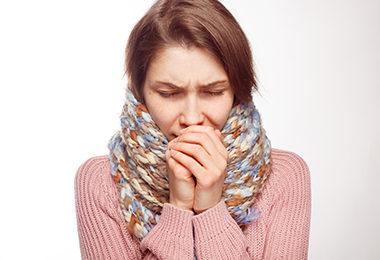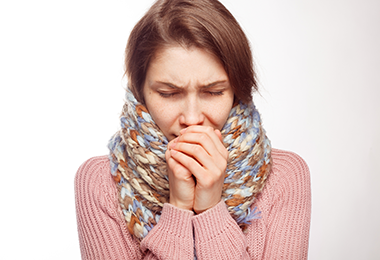Rhinitis
What is rhinitis?
Rhinitis is when a reaction occurs that causes nasal congestion, runny nose, sneezing, and itching. Most types of rhinitis are caused by an inflammation and are associated with symptoms in the eyes, ears, or throat.
There are several types of rhinitis. The most common are acute rhinitis, which is usually caused by a viral illness, allergic or seasonal rhinitis, and nonallergic or year-round rhinitis. Allergic rhinitis is caused when allergens in the air trigger the release of histamine in the body. Histamine causes itching, swelling, and fluid to build up in the fragile linings of the nasal passages, sinuses, and eyelids.
What causes rhinitis?
The most common causes of rhinitis are:
-
Pollen given off by trees, grass, and weeds
-
Dust mites
-
Mold
-
Cockroach waste
-
Animal dander
-
Fumes and odors
-
Temperature
-
Hormonal changes
-
Certain medicines and overuse of topical nose sprays
-
Changes in the environment
-
Smoke
-
Certain foods or spices
Who is at risk for rhinitis?
People with asthma are at a higher risk for rhinitis. Allergic rhinitis is a common problem that may be linked to asthma. However, this link is not fully understood. Experts think that since rhinitis makes it hard to breathe through the nose, it is harder for the nose to work normally. Breathing through the mouth does not warm, filter, or humidify the air before it enters the lungs. This can make asthma symptoms worse.
Controlling allergic rhinitis may help control asthma in some people.
What are the symptoms of rhinitis?
Symptoms of rhinitis include:
-
Sneezing
-
Stuffy nose
-
Runny nose
-
Itchy nose, throat, eyes, and ears
-
Nosebleeds
-
Clear drainage from the nose
-
Ear infections that keep coming back
-
Snoring
-
Breathing through the mouth
-
Tiredness
How is rhinitis diagnosed?
Most often, the diagnosis is made by your healthcare provider based on an in-depth history and physical exam. In addition to the above signs, the healthcare provider may find:
-
Dark circles under the eyes
-
Creases under the eyes
-
Swollen tissues inside the nose
-
Mouth breathing
How is rhinitis treated?
Avoidance of the allergens that are causing the problem is the best treatment. The symptoms of rhinitis sometimes look like other conditions or medical problems. Always see your healthcare provider for a diagnosis.
Treatments for rhinitis may include:
-
Antihistamines
-
Nose sprays
-
Decongestants
-
Medicines for asthma symptoms
-
Allergy shots
-
Surgery for some health problems
Can rhinitis be prevented?
Preventive measures for avoiding allergic rhinitis include:
-
Avoiding areas where there is heavy dust, mites, or molds
-
Avoiding pets
-
Avoiding what you know you are allergic to
-
Controls in your environment, such as air conditioning during pollen season
Key points about rhinitis
-
Rhinitis is a reaction that happens in the eyes, nose, and throat when allergens in the air trigger histamine to be released in the body.
-
Some of the most common causes of rhinitis are pollen, dust mites, mold, cockroach waste, animal dander, fumes and odors, hormonal changes, and smoke.
-
Symptoms of rhinitis include: sneezing, stuffy, runny, and itchy nose, and itchy throat, eyes, and ears, nosebleeds, clear drainage from the nose, ear infections that keep coming back, snoring, breathing through the mouth, and tiredness.
-
Treatment for rhinitis includes: medicines, allergy shots, and surgery for some health problems
-
Preventive measures for rhinitis include avoiding what you are allergic to.
Pediatric Otolaryngology

Our pediatric otolaryngologists provide compassionate and comprehensive care for children with common and rare ear, nose, and throat conditions. As part of the Johns Hopkins Children's Center, you have access to all the specialized resources of a children's hospital.





